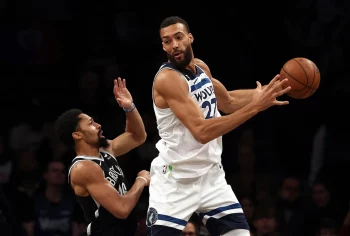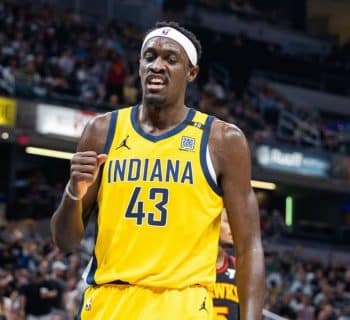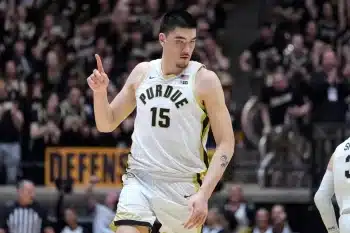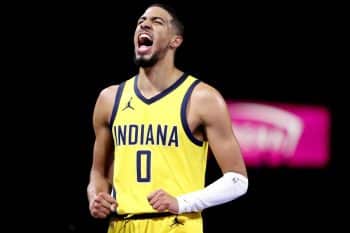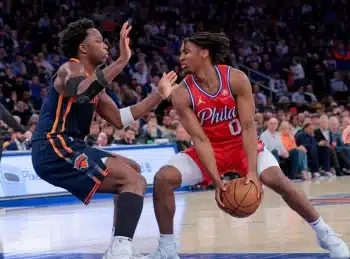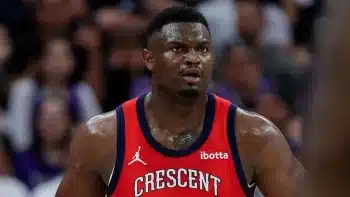NBA
The L.A. Clippers Should Move on From J.J. Redick

In July of 2013, the Los Angeles Clippers, Phoenix Suns and Milwaukee Bucks completed a three-team trade that landed sharpshooter J.J. Redick in Los Angeles. Since his arrival, Redick has provided the Clippers with incredibly reliable shooting, extremely important off-ball movement, underrated defensive impact (for the most part) and another important veteran presence that would help stabilize what at times could be a shaky locker room.
After four years with the Clippers, Redick will be an unrestricted free agent this offseason. Despite all of his accomplishments and arguable status as the Clippers’ fourth-most important player over the last four years, Los Angeles should probably pass on re-signing Redick this offseason for a variety of reasons.
Redick’s significance to the Clippers over the last four years cannot be denied. He has been the Clippers’ go-to-scorer in first quarters, runs opponents through multiple screens on each possession, knocks down jumpers coming off of screens and out of catch-and-shoot opportunities, acts as a secondary playmaker in specific sets, has hit several clutch shots in high-pressure situations, plays solid team defense and has been a staple in the Clippers’ high-scoring starting lineup since first arriving.
Redick has simply made the Clippers a better team over the last few seasons, stemming primarily from his ultra-efficient shooting, as seen in his shooting chart for this season.
His efficiency in the midrange and off the dribble made him particularly dangerous on offense. Whereas strictly catch-and-shoot three-point marksmen can be run off the line and essentially shut down, Redick could take the ball off the dribble and pull up for a jumper, drive to the basket for a layup, draw help defenders and set up DeAndre Jordan or Blake Griffin up for a lob or kick the ball out to reset the offense. All of these things are what has made Redick so effective with the Clippers. And yet, all of that may not matter this upcoming offseason considering several teams with cap space will likely make him sizable offers and, perhaps more importantly, the fact that he has failed to contribute at a high level in the postseason since joining the Clippers.
In his four regular seasons with the Clippers, Redick has shot 39.5 percent, 43.7 percent, 47.2 percent and 42.9 percent from three-point range, respectively. Redick never averaged fewer than 5.3 three-point attempts per game during these regular seasons. However, in the playoffs, Redick shot 40 percent, 39.8 percent, 35.5 percent and 34.6 percent from three-point range, respectively. Redick generally averaged a high volume of three-point attempts, but in this year’s postseason, he only averaged 3.7 three-point attempts per game.
The problem has been, and is increasingly so now, that at 6-foot-4, Redick has been unable to create the same space between himself and his defenders in the postseason. The Clippers have run the same actions to run Redick’s defenders through multiple screens, but with better overall defenses in the postseason and more time for teams to adequately scheme against him, Redick’s production has fallen flat overall in the playoffs with the Clippers. In Game 7 of the Clippers’ first-round series against the Utah Jazz, Redick made one of his five field goal attempts and finished with three points. Redick will be age 33 when he signs his next contract, so it’s not as though these issues in the postseason are going to somehow improve significantly moving forward as Redick presumably slows down.
To be fair, Redick is the sort of player that can post a less-than-exceptional stat line but still help his team win. If Redick is being locked down by an overloading defense, the likelihood is his teammates should have less defensive pressure and better scoring opportunities. However, the Clippers have been unable to capitalize on any advantages that may arise from the overloading pressure teams have put on Redick in the postseason.
Additionally, while Redick has been an effective defender at shooting guard for the Clippers, he was exploited by Utah’s bigger wings throughout their series matchup. Players like Joe Johnson, Rodney Hood and Gordon Hayward were simply too big and too skilled for Redick to handle defensively. Utah often sought and forced switches to get guys like Johnson and Hayward the ball with Redick or Jamal Crawford defending them. It was a simple tactic that worked repeatedly throughout the series. While not every team features ball-handling wings as big as Utah’s, this problem will only worsen as Redick continues to age and his athleticism continues to decline.
It is rumored that Redick will be seeking an annual salary in the $16-18 million range this offseason. While Redick’s shooting makes him a valuable player, it’s not clear that the Clippers should make such an investment in a player who has struggled in each of the last four postseasons. The Clippers could simply let Redick walk away or try and come up with a sign-and-trade deal with another team (assuming of course that the Clippers re-sign Chris Paul and Blake Griffin rather than blowing up the roster). Marc Berman of the New York Post talked to league executives recently about a scenario in which the Clippers sign and trade Redick, along with other players, to the New York Knicks in exchange for Carmelo Anthony.
A lot of different moving parts have to come together for this sort of deal to happen, so for now, it’s simply a hypothetical. However, the Clippers should be looking into such options since Doc Rivers has run back the same team, for the most part, for several seasons now and has come up well short each year. Redick has played a major role in the Clippers’ overall success in that span of time, but his shortcomings in the postseason, the size of his next contract and the fact that he will soon be 33 should make his future in Los Angeles unclear.
For his part, Redick hasn’t said much about his future since the Clippers’ season came to an end.
“The playoffs are always emotional. It was an emotional series for both teams. It was an emotional series for me,” Redick said. “I’m just processing emotion right now. I’m not thinking about the future.”
There are more questions than answers right now for the Clippers as they enter a crucial offseason. If Paul and Griffin opt to take their talents elsewhere, then re-signing Redick makes little sense. But if both stars decide to re-sign, Doc Rivers will have a lot to consider in regard to Redick, despite all he has accomplished in his four seasons in Los Angeles.
